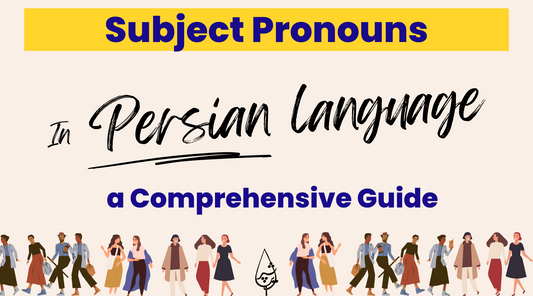Ever wondered what the Persian ای (ey) actually means? Depending on how you use it, it can mean "Hey," "O," or "Oh," and sometimes, well… something in between. Let’s break it down with some fun examples!
1. ای as "Hey" – Grabbing Someone’s Attention
Imagine your friend keeps falling for the same type of guy—the one who seems different at first but ends up breaking her heart. Again. And again. And just as she says, "No, this time it’s different!"—you give her the look and say:
👉 ای دختر! چرا با خودت این کارها رو میکنی؟
👉 "Hey, girl! Why do you keep doing this to yourself?!"
Or let’s say your cat is eyeing your food like it’s legally his:
👉 ای گربه! اون غذای منه!
👉 "Hey, cat! That’s my food!"
Basically, if you're trying to grab someone’s attention, ای works just like "Hey" in English. But be careful—shouting ای too aggressively might make you sound like an angry Persian uncle shouting outdated, unsolicited advice at the kids.
2. ای as "O" – The Poetic, Dramatic Flair
If you’re feeling poetic (or just extra dramatic), ای turns into "O"—not the surprised "Oh!" but the grand, soulful kind of "O" that makes you sound like you belong in a Shakespearean play.
For example, in Googoosh’s song Negah Mikonam, ای is used in a deeply emotional way. If you want to learn to sing a Persian pop song that’s both easy and beautiful, check out my video where I break down pronunciation, meaning, and more. 🎵 Link coming soon]
But ای isn’t just for pop songs—you’ll find it all over Persian classical poetry. Take this gem from Hafez, which was also sung beautifully (and mercifully) by the Queen of Persian music, هایده Hayedeh:
💔 ای پادشه خوبان داد از غم تنهایی /ey pādeshah-e khoobān, dād az gham-e tanhāyi/
💔 دل بیتو به جان آمد، وقت است که بازآیی /del bi to be jān āmad, vaght ast ke bāz āyi/
O king of the beloved, I cry out from the sorrow of loneliness.
My heart, without you, has reached its final breath—
It is time for you to return.
I honestly cried while writing this part of the blog. del bi to be jān āmad...
For those of you who are interested, read the full lyrics of حافظHāfez here.
Or try spotting ای in this famous song by Ebi: Begoo ey yar, begoo ey vafadar begoo! 🎶
Lyrics Translation
Sounds deep, right? That’s the magic of ای! It gives any sentence an old-school, grand feel—perfect for Persian poetry, songs, or when you're staring at the rain, feeling a little too melancholic about love.
3. ای as "Oh" – When You’re Feeling ALL the Feels
Sometimes ای expresses strong emotions, like excitement, frustration, or pure desperation. This is where "Oh" works best.
😩 ای خدا! چرا همیشه اینترنت من قطع میشه؟!
👉 Oh God! Why does my internet always go out?!
😍 ای عشق! کی نوبت من میشه؟!
👉 Oh love! When is it my turn?!
Basically, if you want to sound dramatic without going full Hafez, use ای as "Oh." It adds just the right amount of emotion without making people think you live in a 13th-century Persian court.
So… "Hey," "O," or "Oh"? Which One Should You Use?
It all depends on the vibe you want:
✔ Casual? Use "Hey" → "ای پیشی! بیا اینجا!" ("Hey Kittie! Come here!")
✔ Poetic? Use "O" → "ای یار! کجایی؟" ("O beloved! Where are you?")
✔ Emotional? Use "Oh" → "ای وای! دیر رسیدم!" ("Oh no! I’m late!")
So next time you hear ای in a Persian song or poem, you’ll know exactly what’s going on. And if in doubt… just add a little drama—it’s the Persian way! 😎🎭




